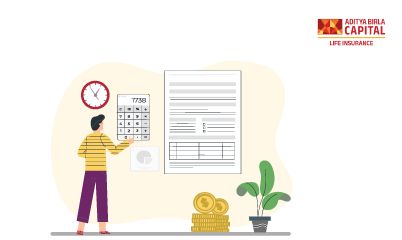How To Get The Best Return On Investment In Life Insurance?

Plan Smarter, Live Better!


- Table of Contents
FAQs of Return on Investment in Life Insurance
Life insurance can be a good investment option if chosen wisely. Investment-linked life insurance policies, such as endowment plans and ULIPs, combine life coverage with an investment component, allowing you to achieve your financial goals while securing your loved ones' financial future.
Term insurance provides pure life coverage for a specific term, with no maturity benefits if the policyholder survives the term. Investment-linked insurance policies, such as endowment plans and ULIPs, combine life coverage with an investment component, offering returns on your investment along with insurance protection.
The tax treatment of returns from life insurance policies depends on the policy type and the applicable tax laws. Generally, death benefits are tax-free, while maturity benefits from policies with a sum assured of at least 10 times the annual premium are tax-free under Section 10(10D) of the Income Tax Act. Consult a tax professional for specific guidance based on your policy and tax situation.*
To maximize the returns on your life insurance investment, choose the right policy type, evaluate the insurer's credibility, understand policy features and charges, diversify investments, monitor and review regularly, stay invested for the long term, consider using riders, top-up premiums, online tools, and seek professional advice.
Yes, ULIPs offer the flexibility to switch between different funds, such as equity funds, debt funds, or a combination of both. You can make fund switches based on your risk appetite and investment objectives to optimize your returns.
To assess the returns on your life insurance policy, monitor the fund performance (for ULIPs) or bonus declarations (for endowment plans) regularly. Compare the returns with other similar investment options and benchmarks to determine if your policy is generating good returns.
Riders can impact the returns on your life insurance policy as they come at an additional cost. However, insurance riders can enhance the coverage and overall value of your policy by providing extra financial protection and benefits.
Some ULIPs may impose charges for switching funds, while others offer a limited number of free switches per year. Make sure to read the policy document and understand the charges associated with fund switches before investing in a ULIP.
Use online tools, such as premium calculators, fund performance trackers, and policy comparison websites, to compare policy features, charges, and returns. Additionally, consult a financial advisor for personalized guidance on choosing a life insurance policy that best suits your needs and objectives.
Some life insurance policies, such as ULIPs, allow partial withdrawals after a specific lock-in period, subject to certain terms and conditions. However, withdrawing your investment before the end of the policy term may impact the returns in long run and insurance coverage. Make sure you understand the withdrawal rules and charges before investing in a life insurance policy.
Get immediate income payout after 1 day of policy issuance^
ABSLI Nishchit Aayush Plan
Guaranteed# Income
Life Cover across policy term
Lumpsum Benefit at policy maturity.
Get:
₹33.74 lakhs~
Pay:
₹10K/month for 10 years
Most Popular Calculator
*Tax benefits are subject to changes in tax laws. Kindly consult your financial advisor for more details.
ADV/7/24-25/1087







